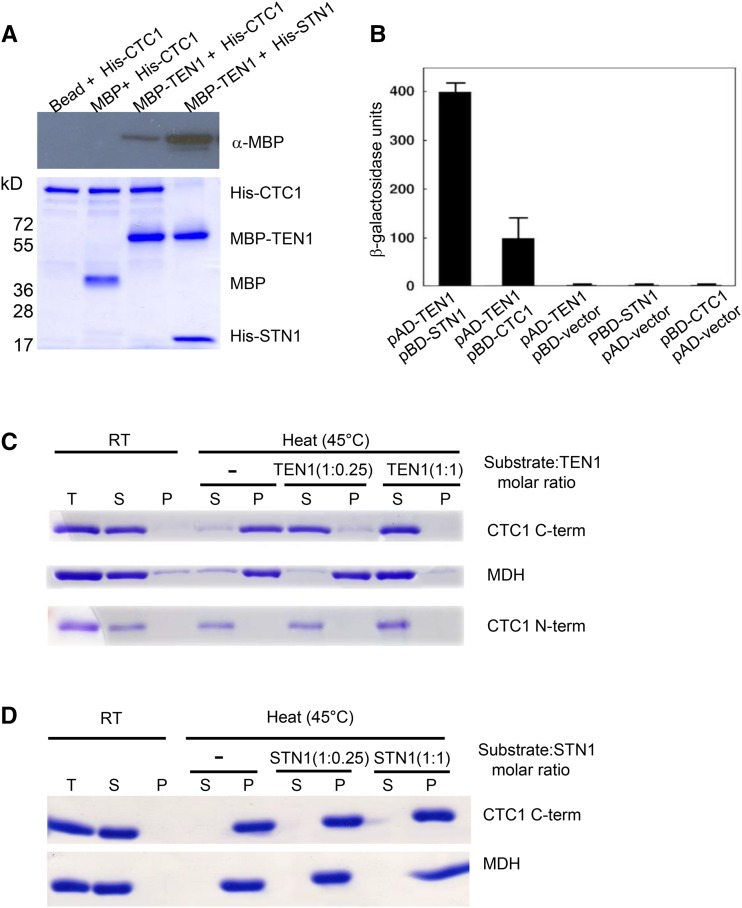Figure 4.
AtTEN1 Protects CTC1 from Thermal-Induced Aggregation in Vitro.
(A) Co-IP immunoblot data with recombinant MBP-fusion CST proteins and His-tagged CST proteins are shown. Immunoprecipitation of MBP-fusion TEN1 using His tagged CTC1 and STN1 recombinant proteins by anti-His antibody conjugated agarose beads. Co-IP protein input controls with same amounts included (lower panel).
(B) Results of yeast two-hybrid assays for CST interactions. Numbers indicate arbitrary units to show relative activities of protein-protein interactions using o-nitrophenyl-d-galactoside activity. pAD and pBD denote an activation domain or a binding domain containing vector. TEN1, STN1, and CTC1 with empty vectors are included as controls for self-activation. Values represent means of at least three independent experiments.
(C) and (D) In vitro protection assay.
(C) AtTEN1 protects AtCTC1 from heat-induced aggregation. CTC1 N-term (1 to 384 amino acids), CTC1 C-term (385 to 1272 amino acids), and MDH were incubated at RT and 45°C for 30 min with or without AtTEN1.
(D) AtSTN1 does not protect CTC1 from heat-induced aggregation. CTC1 C-term (385 to 1272 amino acids) and MDH were incubated at RT and 45°C for 30 min with or without STN1. For (C) and (D), equal amounts of total protein (T) were centrifuged and divided into soluble (S; stable) or pellet (P; unstable) fractions. Proteins were resolved by SDS-PAGE followed by Coomassie blue staining.

